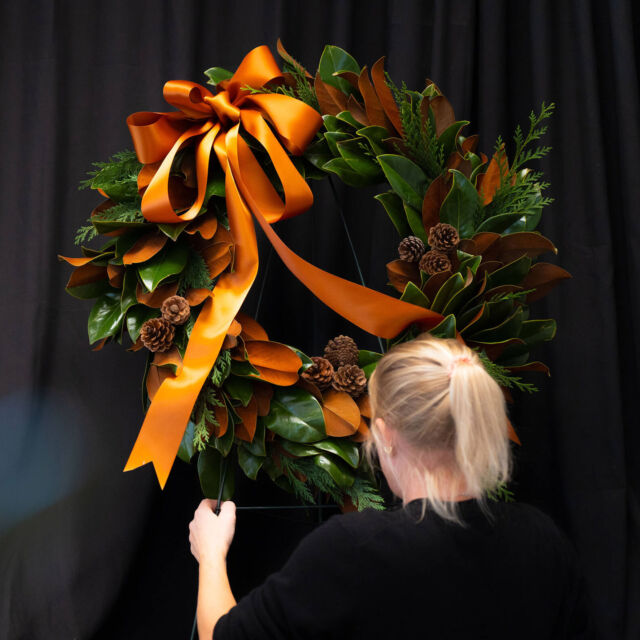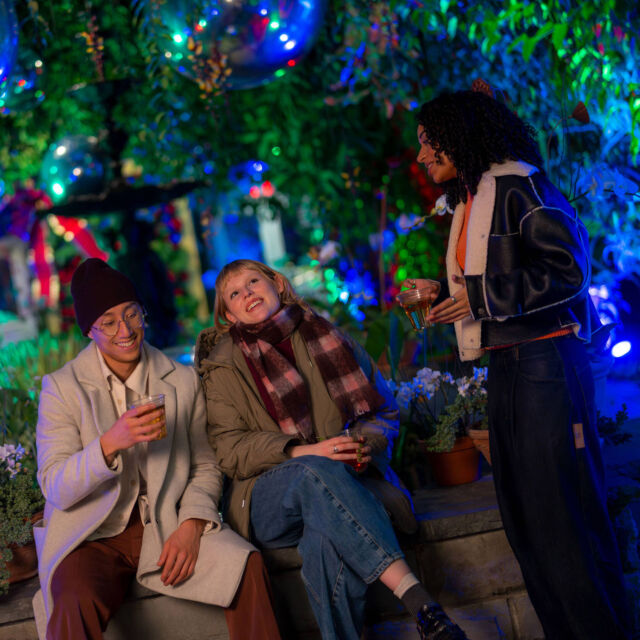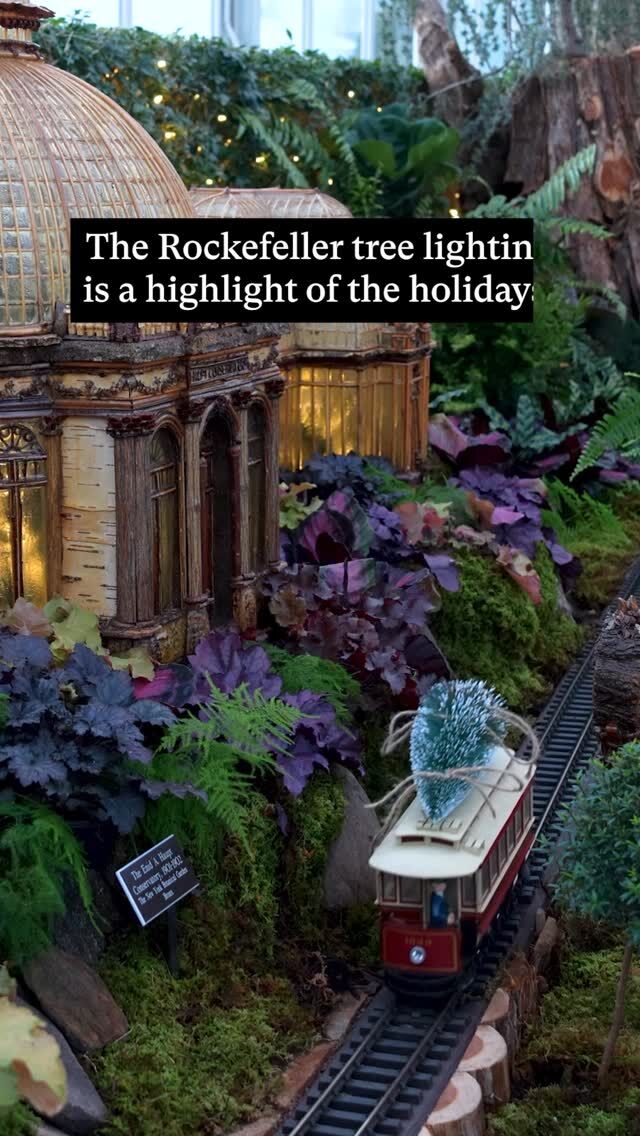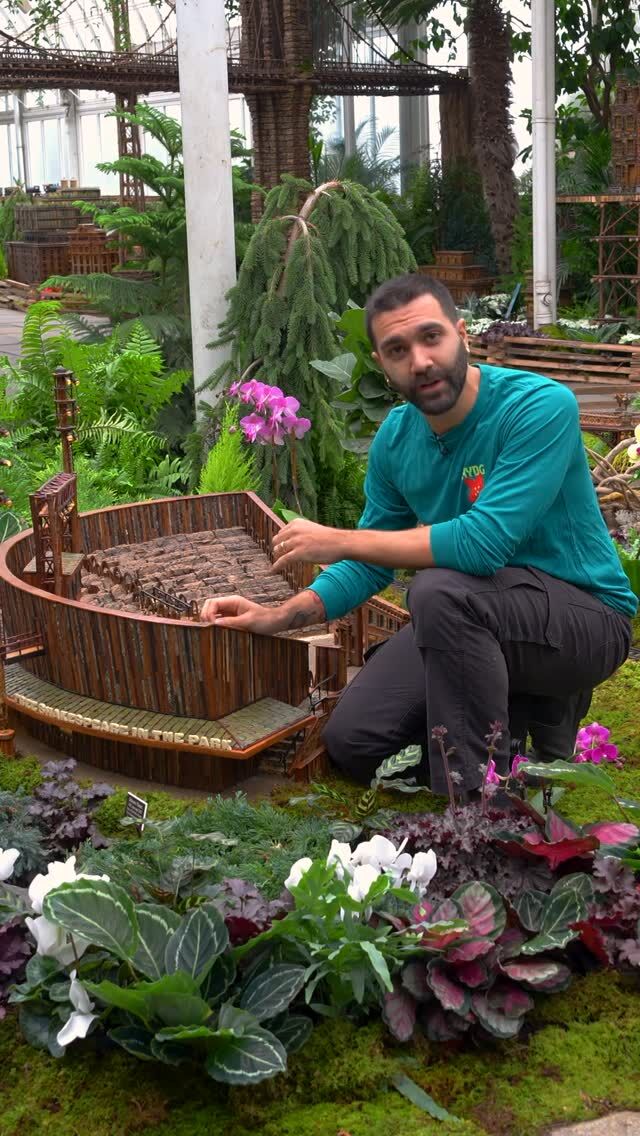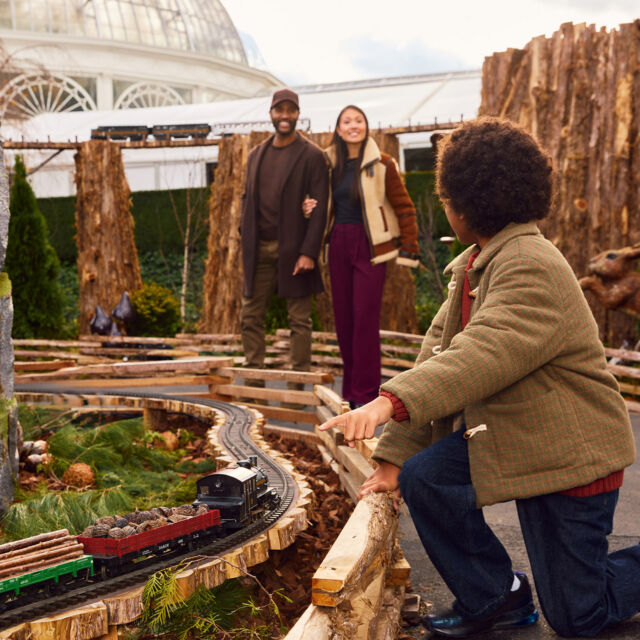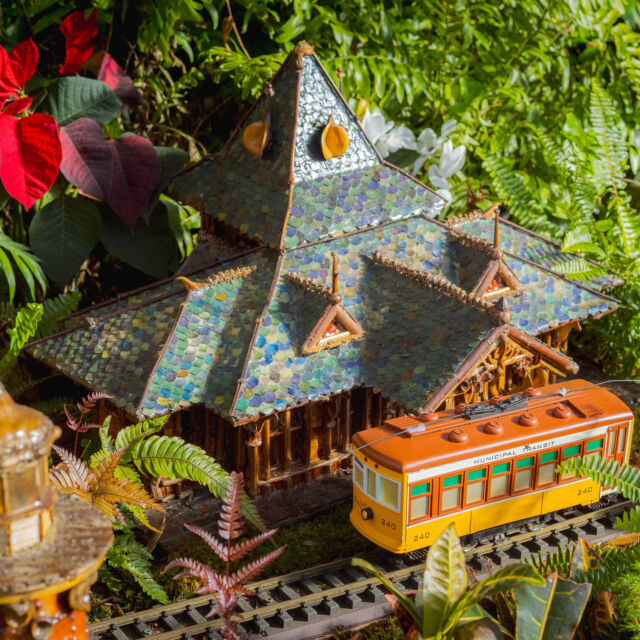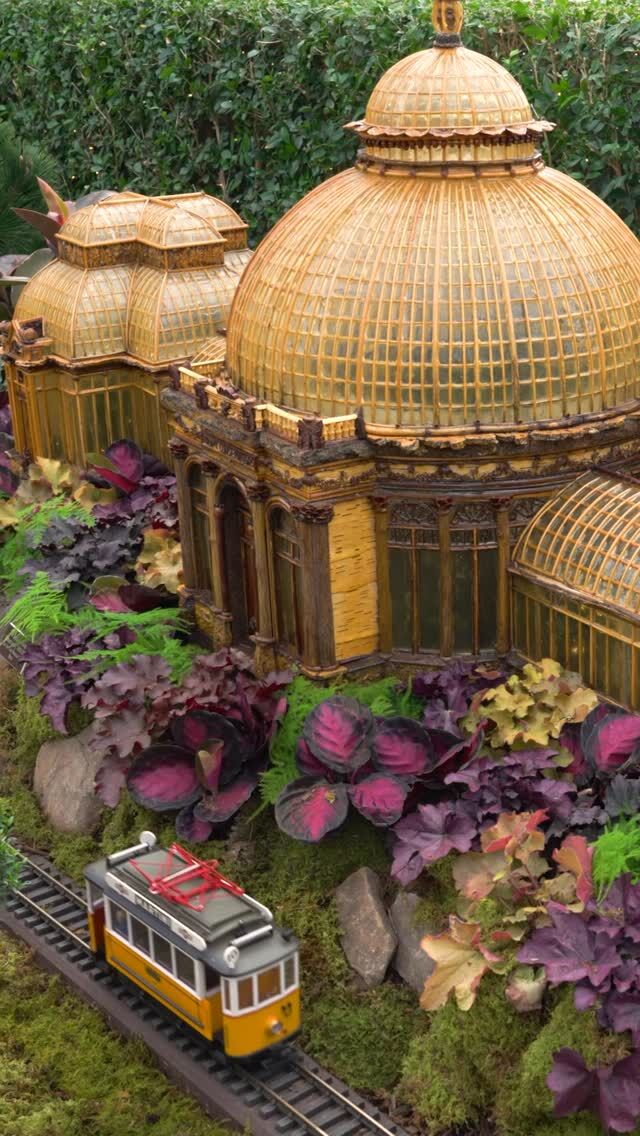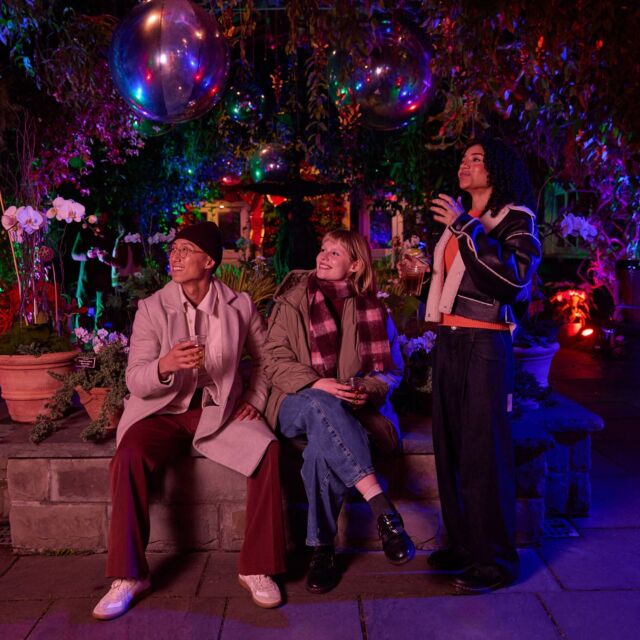Updates from The Archives: Improving Digital Access to Archival Collections
Siena Oristaglio is the Archival Systems Intern at the LuEsther T. Mertz Library of the New York Botanical Garden.
As this summer’s Archival Systems Intern for the LuEsther T. Mertz Library, I worked on several projects to improve digital access to archival collections. Under the supervision of Digital Systems Librarian Althea Meer (and alongside long-time Mertz Library volunteer Ellen Murphy), I assisted in the migration of approximately 140 collection finding aids from a legacy website into the library’s updated Archives Portal. Finding aids are detailed guides to archival collections that help researchers, historians, or anyone curious to understand the materials contained within a given collection. They describe what can be discovered within the physical archives, helping researchers to identify relevant materials and making it easier for library staff to locate those materials.
The archives portal enables visitors to search for finding aids with ease, refining results based on date ranges, subjects, creators, and more. Within the Archives Portal, the contents of finding aids are displayed hierarchically so visitors can clearly see how items within collections relate to one another. Links between collections allow visitors to follow their curiosities and explore related subjects and creators. Lastly, each finding aid also includes a detailed biographical note (and sometimes a creator photograph) that gives historical background about the person or institution behind the collection. Although the processing archivists are currently re-processing many of the Garden’s archival collections, this will take years, and Mertz Library staff aim to ensure that collection information remains accessible in the meantime.
Below, you can check out several archival finding aids that were recently migrated and are ready to be explored. Collection descriptions are pulled from the corresponding finding aids. To view items from these collections in person, email archives@nybg.org to make a research appointment.
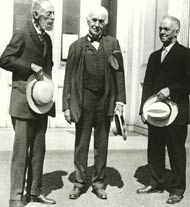 Thomas A. Edison papers (PP-025)
Thomas A. Edison papers (PP-025)
With 1,093 U.S. patents to his credit, Thomas Alva Edison (center) is the most prolific American inventor to date. Although he is most commonly associated with the telecommunications industry and the invention of the incandescent lamp, Edison was engaged for two years (1927–1929) in the search for a domestic source of natural rubber. This collection documents the research of the Edison Botanical Corporation in its search for a natural rubber source native to the United States. It contains carbon copies of typewritten transcriptions of 46 of the 53 research notebooks and Experiments 974-1334 towards the invention of the Electric Lightbulb.
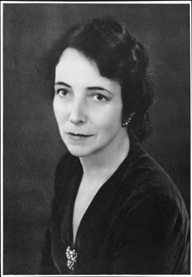 Jean Gordon Papers (PP-032)
Jean Gordon Papers (PP-032)
Jean Gordon, author and rose historian, founded the Rose Museum in St. Augustine, Florida, in 1956 and operated it from her home until 1966. Gordon wrote numerous books, including Pageant of the Rose (1953, rev. 1961), Immortal Roses (1959), The Art of Cooking with Roses (1968), and Rose recipes: customs, facts, fancies (1958). This collection of Gordon’s personal papers includes Gordon’s background notes and clippings for her publications, catalogs, booklets, publicity, and book reviews, as well as posters, bibliographic index cards, and photographs. The entire collection relates to her interest in roses with correspondence scattered among these papers.
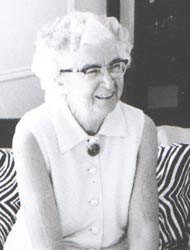 Jean R. Janish papers (PP-038)
Jean R. Janish papers (PP-038)
Jeanne R. Janish pursued a masters degree in Geology at Stanford where she was asked by her Paleontology professor, Dr. James Perrin Smith, to illustrate his monograph on Permian Ammonites of Timor. This was the catalyst for her career in botanical illustration. From 1927–1974 Janish prepared illustrations for 32 major books, plus many short papers, articles, and booklets. The collection contains correspondence between Janish and the numerous publishers and authors that she worked with, letters to students of botanical illustration seeking her advice on drawing techniques, as well as many of her sketches and drawings.
In addition to improving access to archival finding aids, I also worked to increase the discoverability of items within Mertz Digital. Visitors to the library’s 18 digital collections will now find additional links between collection items and to the library’s online catalog. As I worked with these collections, I enjoyed spending time virtually with unique archival materials. Below are some digitized items that I recommend for exploration:
Circa Instans, attributed to Matthaeus Platearius (circa 1190)
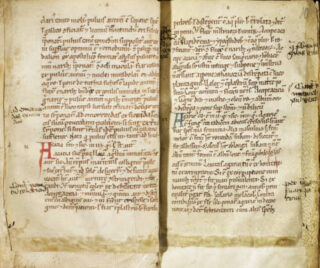
Circa Instans is one of the first Western books on pharmacology, mainly focused on the medicinal uses of plants. It is attributed to Matthaeus Platearius, a physician and lecturer at the School of Salerno in Italy. Approximately 750 years after this particular manuscript’s creation, it was acquired by Emil Starkenstein, a prominent Czech-Jewish pharmacologist and one of the founders of clinical pharmacology.¹ In 1941, Starkenstein was deported to Mauthausen-Gusen concentration camp. Likely hoping to preserve Starkenstein’s beloved rare book collection, his family sold it to rare book dealer Ludwig Gottschalk. Gottschalk, also facing deportation, hid the collection in several locations across the Black Forest before going into hiding himself. Unfortunately, Starkenstein was killed at Mauthausen-Gusen, but Gottschalk survived and was able to regather the collection. The Mertz Library eventually acquired a portion of the collection, including two early copies of Circa Instans.² The manuscript digitized here is considered to be the earliest version of the work still in existence.
A Second Century of Orchidaceous Plants, edited by James Bateman (1867)
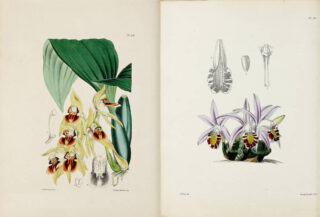
This volume contains 100 hand-colored plates by Scottish illustrator Walter Hood Fitch. Each plate displays a unique variety of orchid and is accompanied by a description from horticulturist and orchidologist James Bateman. According to the Smithsonian Library, this volume pioneered “significant changes to care techniques and cultivation of orchids through […] ‘cool orchid cultivation,’ where cool orchids […] reside in cooler temperatures versus the hot climate housing solely used for orchids previously.”³
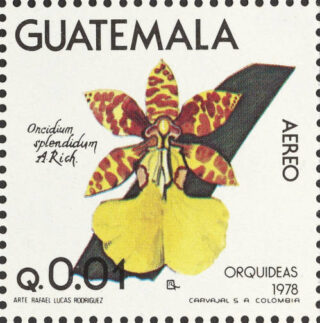 Oncidium Spendidum stamp from Guatemala illustrated by Rafael Lucas Rodriguez (1978)
Oncidium Spendidum stamp from Guatemala illustrated by Rafael Lucas Rodriguez (1978)
Having inherited my grandmother’s stamp collection (along with her appreciation for beautiful stamps), I enjoyed encountering this 1978 orchid stamp from Guatemala drawn by Rafael Lucas Rodriguez, a Costa Rican biologist and botanist.⁴ This particular species of orchid, Oncidium splendidum, can be found in Guatemala, Honduras, and Nicaragua, typically at elevations over 2,500 feet.⁵ It was named by Achille Richard, a French botanist, botanical illustrator, and physician.⁶
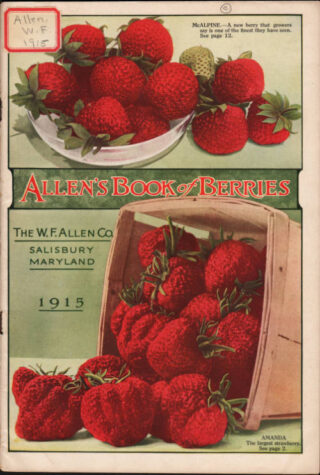 Allen’s Book of Berries by W.F. Allen (1915)
Allen’s Book of Berries by W.F. Allen (1915)
This 1915 strawberry catalog from W.F. Allen Co.—a nursery and seed company based in Salisbury, Maryland—was a sweet summertime find. It features photographs, illustrations, and descriptions of many varieties of strawberries and other berries. The catalog also includes detailed suggestions for growing and harvesting berries at home.
Lastly, as one of my final projects of the summer, I added several rare books (including Circa Instans, described above) to the Biodiversity Heritage Library (BHL), where visitors can explore thousands of digitized materials related to biodiversity. The Mertz Library is a founding partner of the BHL and often contributes biodiversity-related literature to its ever-expanding collection. Resources uploaded to the BHL are also added to the Internet Archive for additional digital preservation and access.
I am thrilled to have been able to contribute to the discoverability of Mertz Library collections. The library will continue to take steps to ensure its materials can be accessed by all, so be sure to stay tuned for future updates!
Sources
- https://en.wikipedia.org/wiki/Emil_Starkenstein
- https://www.jstor.org/stable/2807247
- https://library.si.edu/donate/adopt-a-book/second-century-orchidaceous-plants
- https://www.huntbotanical.org/archives/detail.php?156
- https://archive.is/3Op5j
- https://plants.jstor.org/stable/10.5555/al.ap.person.bm000006989
SUBSCRIBE
Enter your email address to subscribe to this blog and receive updates on new posts.
